Many songbirds eat arthropods. Only a few of these are named for their eating habits, but the tyrant flycatchers are. Members of this family often hunt from a perch, fly out and capture an insect in the air and then return to the perch. However, they also glean insects and spiders from the trees.
The first picture is of the title’s and. Although not in the flycatcher family, this Grey Catbird was hunting for insects alongside flycatchers. Its strange cat-like mewing (from which it gets its name) alerted me. The bird’s preference for skulking through thick brush meant that it took me some time to obtain a clear view of it calling.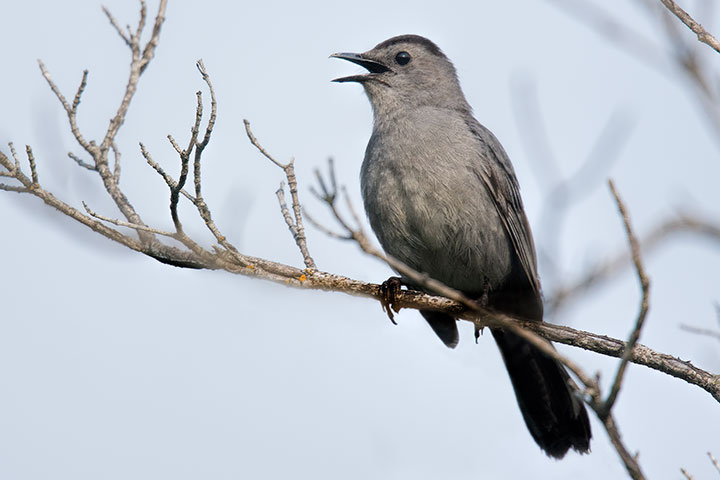
Not all family members have flycatcher in their names, but this one, the Pacific-slope Flycatcher, does. This bird was near its nest in a carport. Field guides tell you that it is a cavity nester, but around here, many prefer human structures to provide a covering for the nest. 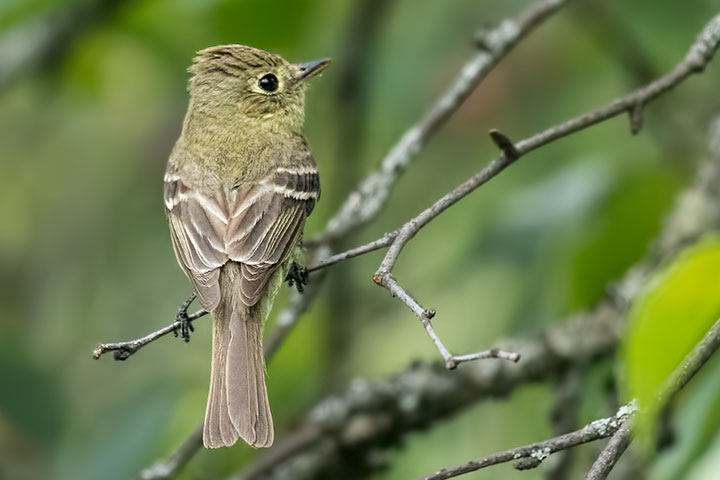
I am fascinated by the number birds that are partial to building nests on human structures, but then complain vociferously about the inevitable presence of those humans. While I try to avoid their nests, it is chastening to be vilified by a robin for using one’s own doorway. The Pacific-slope Flycatcher, below, became stroppy when a human dared to use the carport it had appropriated.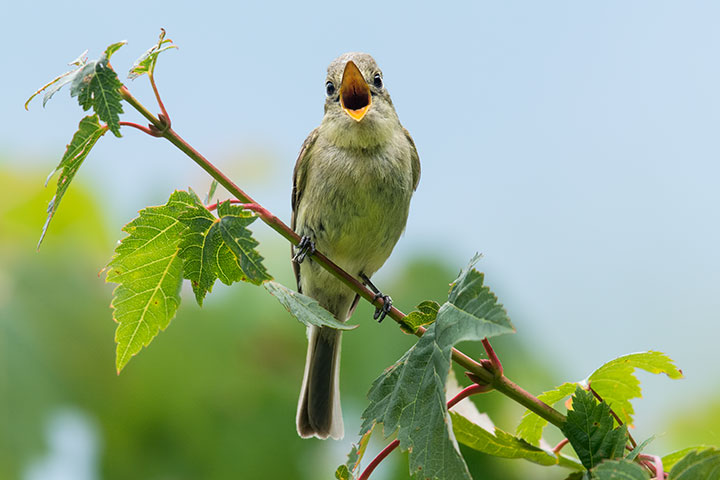
Another case of an and. A Tree Swallow also catches insects in the air.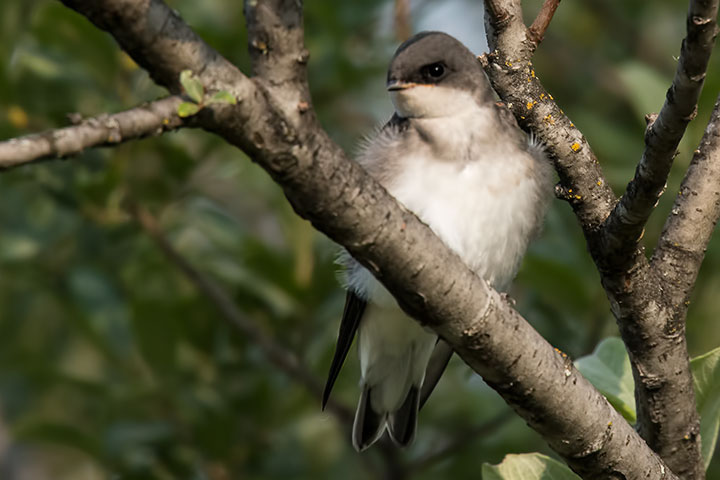
Although a member of the family, the Eastern Kingbird does not have flycatcher in its name. This one is an adult: note the white-tipped tail. 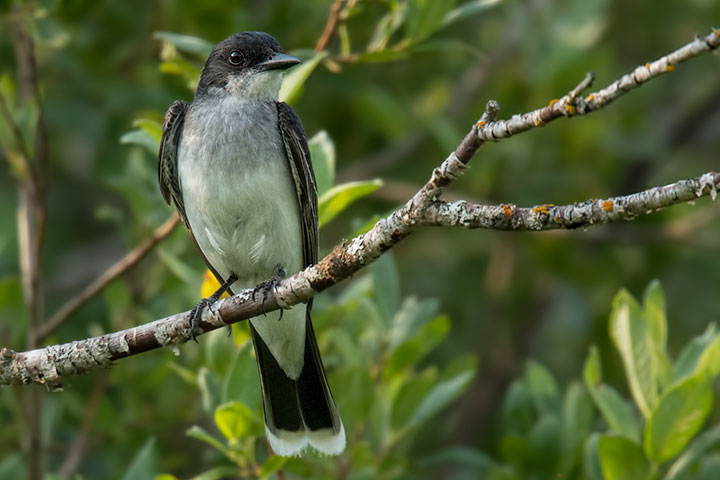
This kingbird is about to fly off, presumably to catch an insect.

